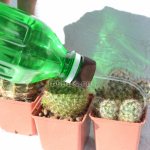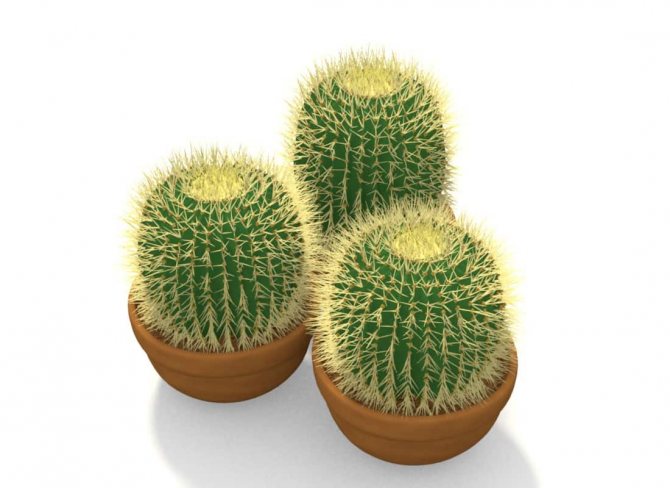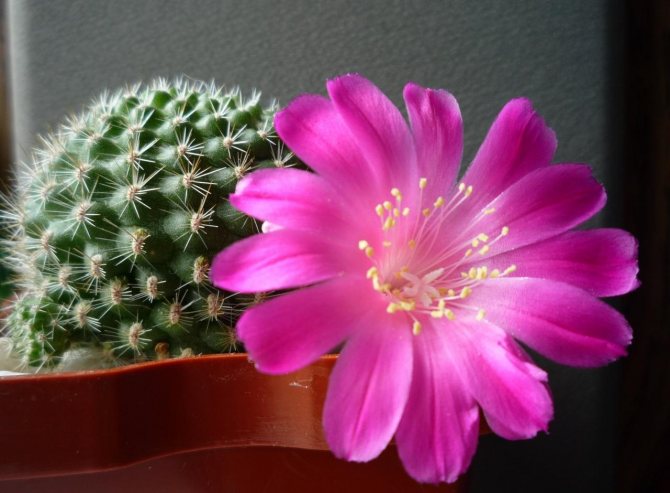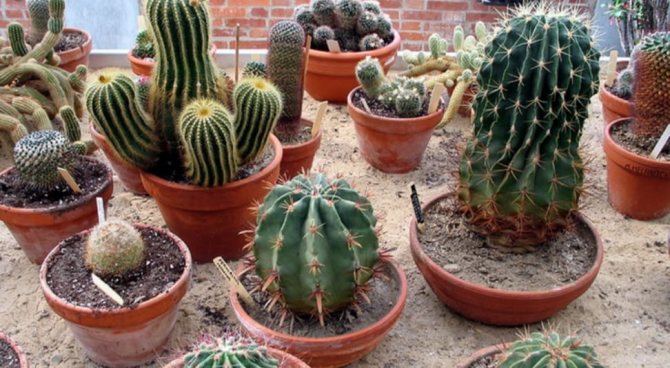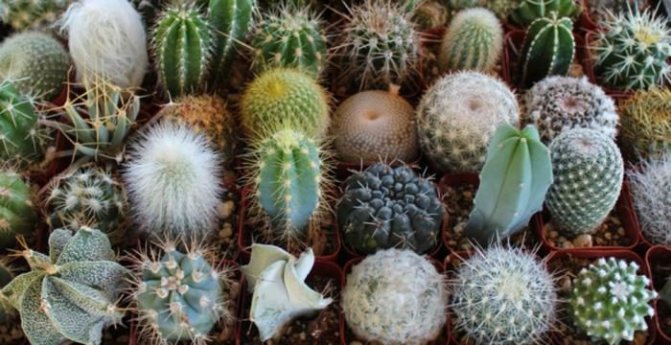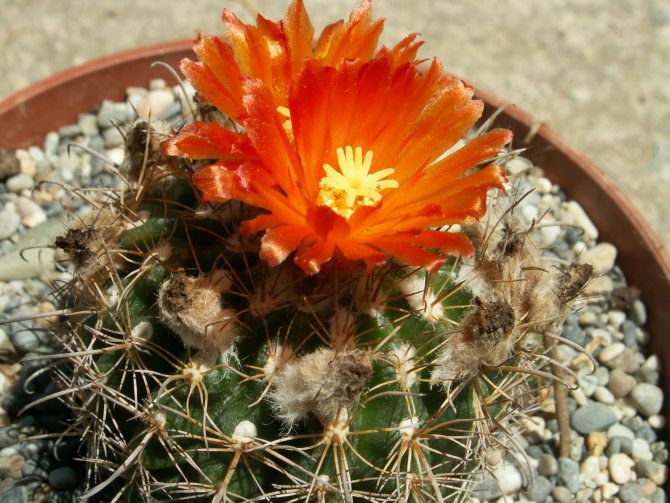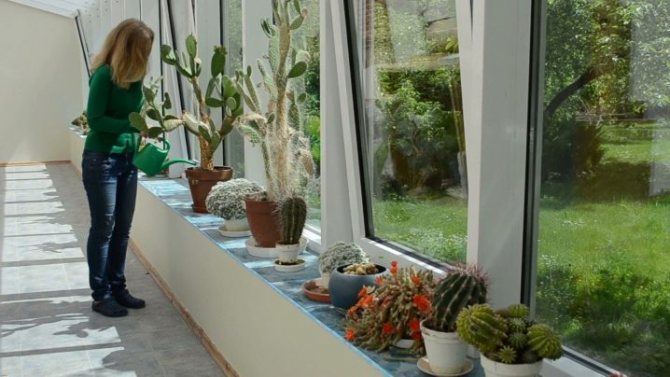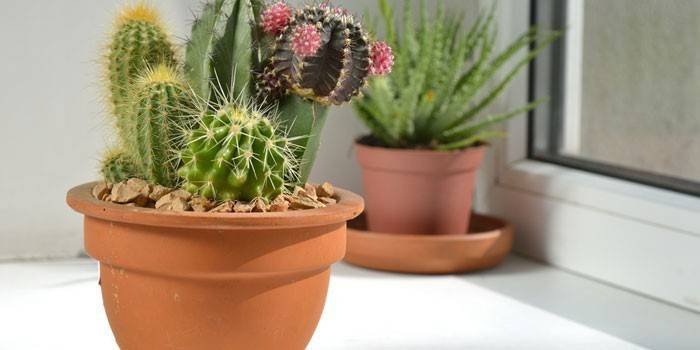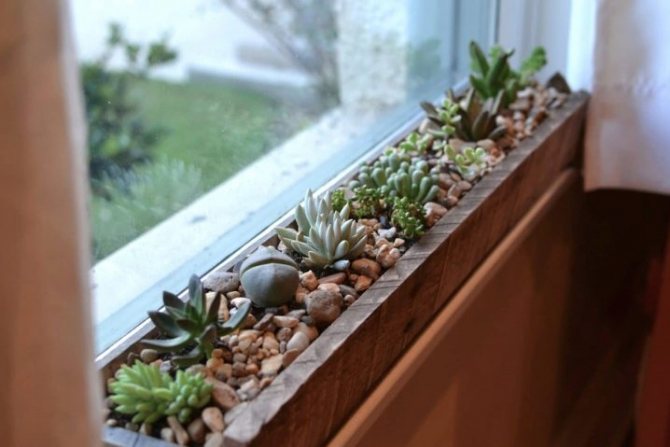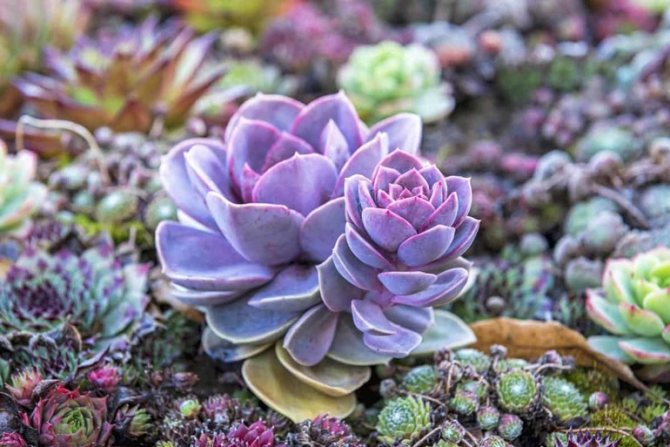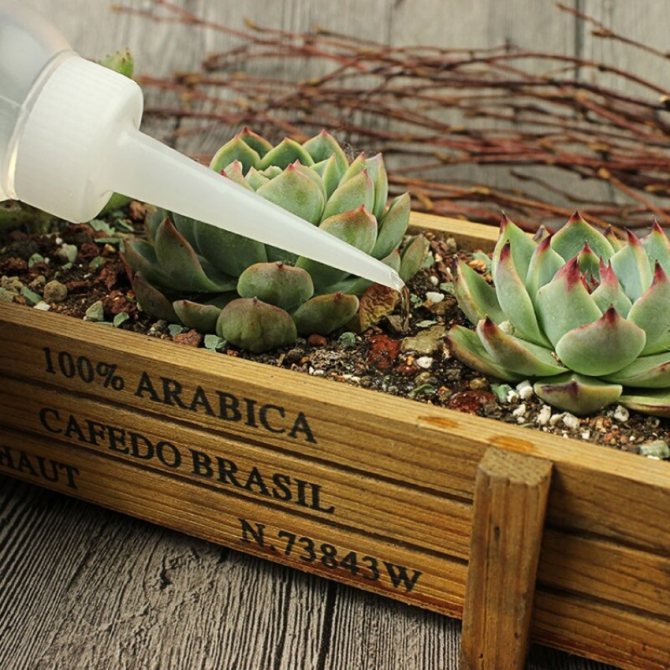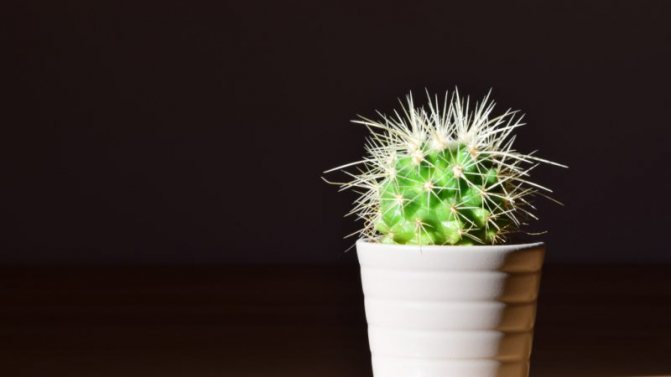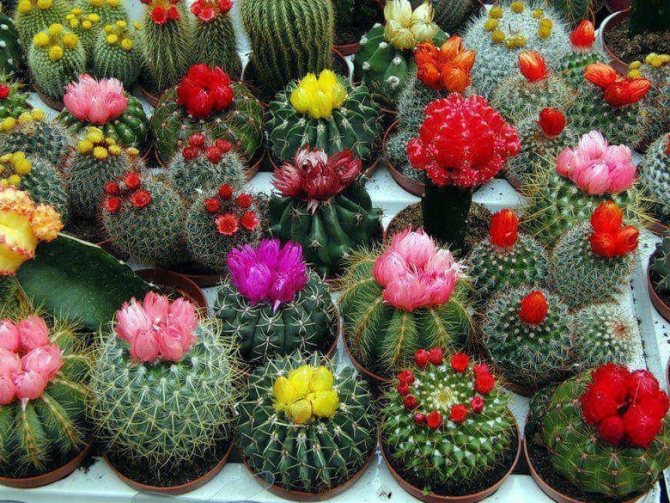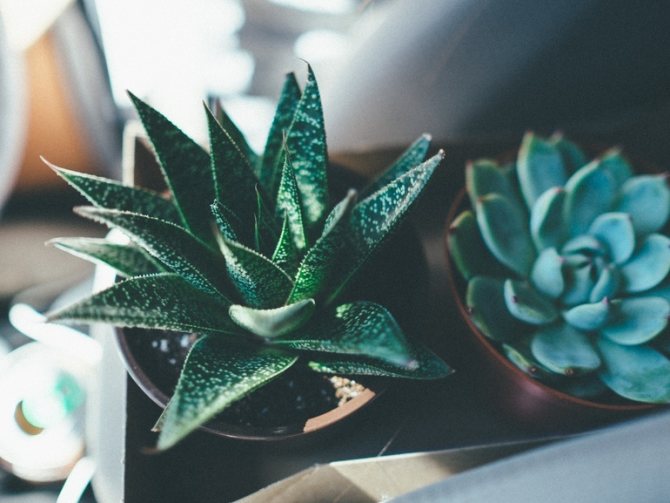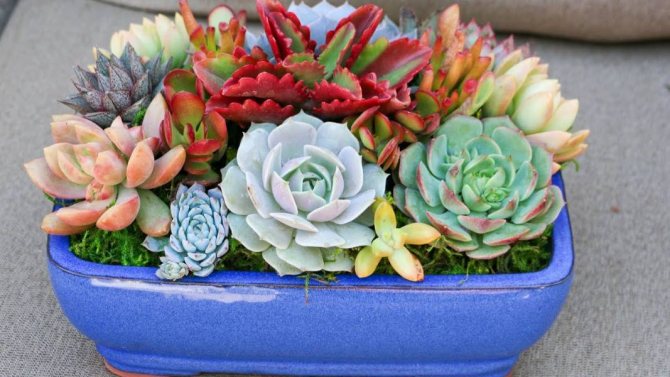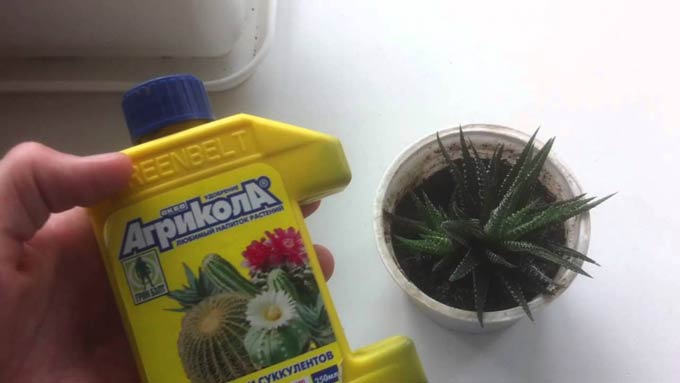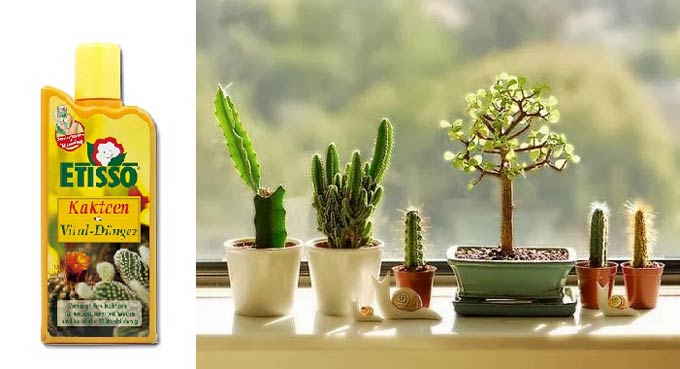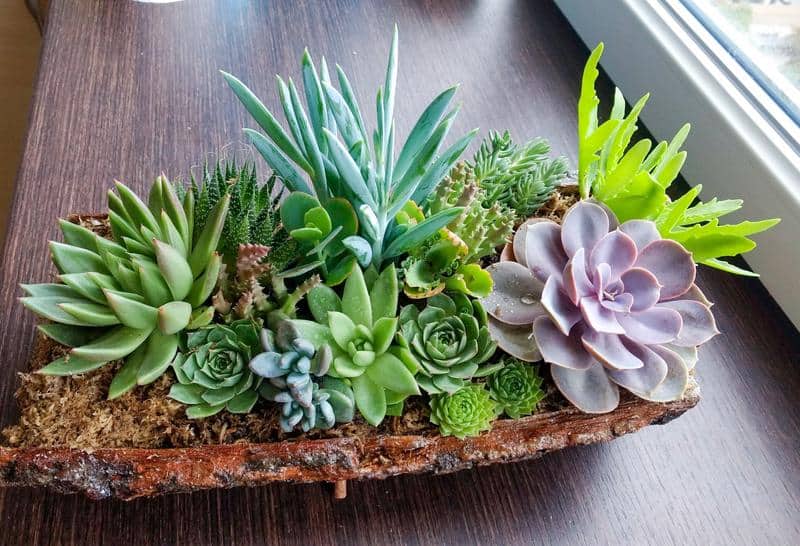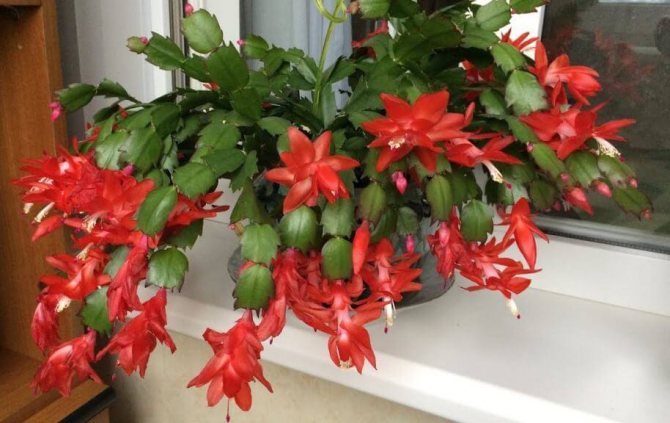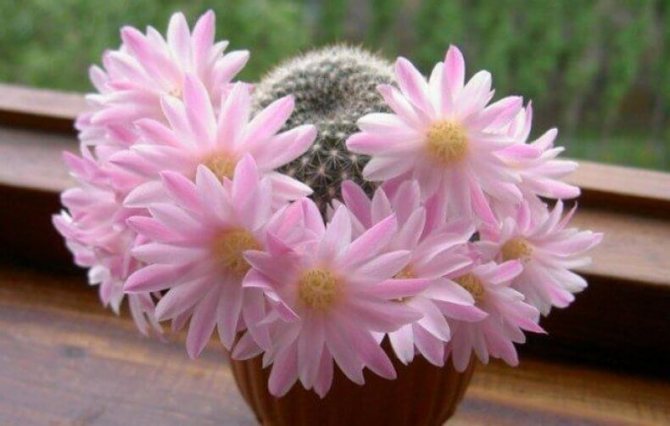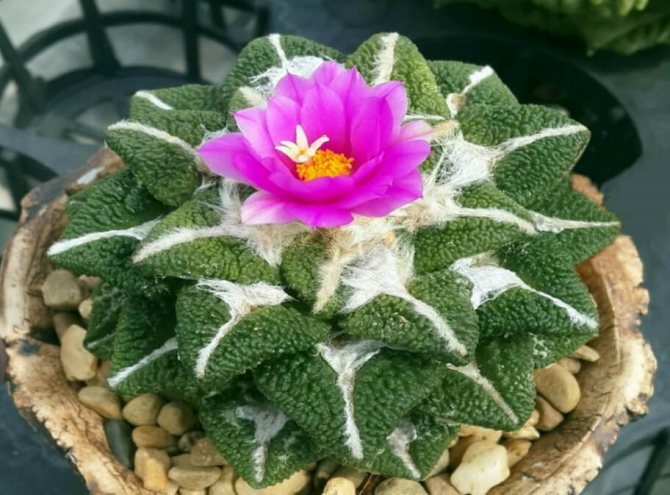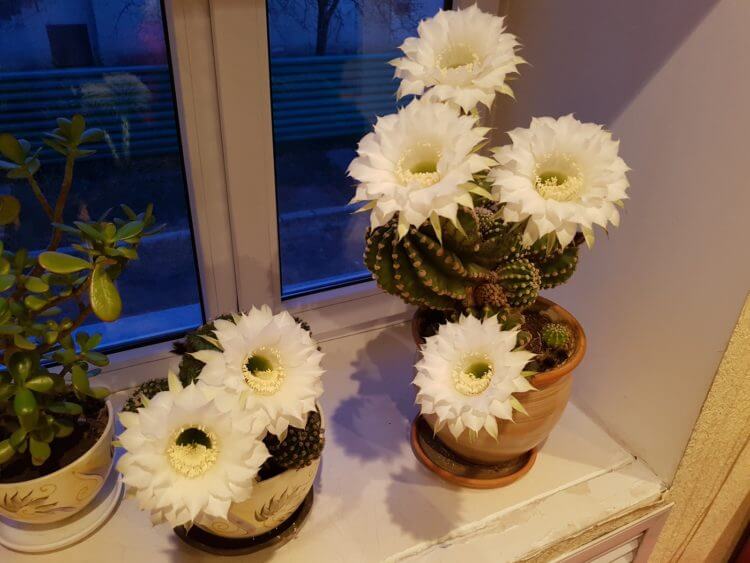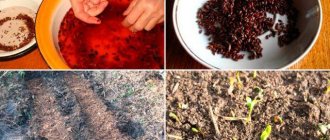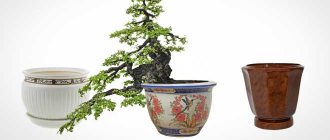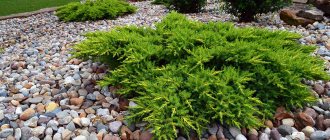All cacti prefer soft water that does not contain chlorine. The water must be clean, i.e. do not contain any impurities or salts. Ideally, you would need to use rainwater or thawed water, but you need to have patience to collect it, so you can use water that has been separated for at least a day or boiled water, you can also use water filtered with household water filters. The water temperature for irrigation should always be equal to room temperature or slightly higher.
About the method of watering cacti - from above or through a pallet, sometimes there is a lot of controversy among cactusists. Apparently, this is due to the fact that in cacti, the main part of the roots that absorb water is located in the lower part of the root system. Undoubtedly, each method has its own advantages:
Watering from above is convenient and familiar, you can see how much water is consumed, the entire earthy clod is moistened with water, but after a while, with this method of irrigation, nutrients are washed out from the upper layers of the soil. In order not to wet the cactus stalk, it is convenient to make a watering pad from a usually plastic bottle: take a piece of flexible tube (for example, from a dropper) or a juice tube, use a drill or an awl to make a hole of a suitable diameter in the lid and insert the tube.
Watering through the pan is convenient because the soil in the pot is not washed out, soil nutrients are washed out much longer than when watering from above, however, with this method of watering, it is difficult to know how much water the plant needs, i.e. this method is more suitable for an experienced cactusist. For some reason, the question of the method of watering is very exciting for the owners of cacti, although in fact it is not fundamentally important, but rather a matter of taste and experience.
What to water
For watering cacti, ordinary chlorinated tap water will not work. You need clean and soft water without salts, chlorine and impurities. Rainwater is perfect, but it needs to be further processed before use. Otherwise, you run the risk of introducing various infections into the soil in addition to the water itself. Hard water for irrigation is a dullness of plant growth and the appearance of all kinds of diseases, which can be caused by alkalization of the soil. At the same time, succulents become very weak and become vulnerable to infectious and fungal diseases. You can reduce the hardness with acetic or nitric acid, which is added at the rate of 2-4 drops per 1 liter of water. Boiling also helps, after which all harmful bacteria die.
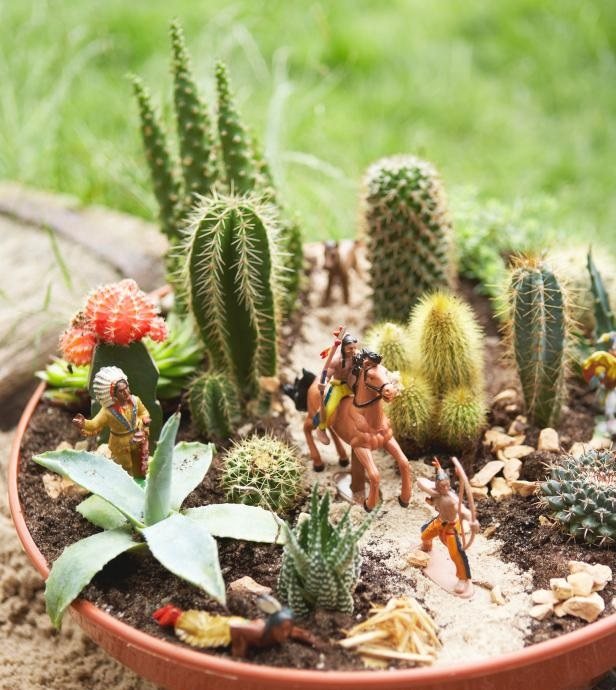
Water for watering cacti must be clean and soft.
Important! People living in villages often use well water for watering cacti. This is wrong, since such water contains harmful substances for the plant. She is also very tough.
How to feed the flowers?
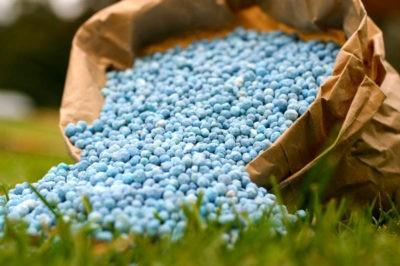

Prepared nutrient mixtures are applied under the root or by spraying. Today, mineral fertilizers are produced in the form of tablets, powder, sticks, granules, solution. Novice growers are advised to use liquid fertilizers in order to avoid dosage errors.
The most effective preparations for cacti are considered:
- sodium humate;
- potassium salt of heteroauxin;
- humic acids found in peat.
How to make the mixture at home?
If it is not possible to buy ready-made mixtures for cacti or are not sure of their quality, then there are some recipes that allow you to prepare fertilizers yourself:
- 0.5 g of calcium sulfate;
- 0.5 g of magnesium sulfate;
- 1 g of potassium nitrate;
- 0.25 g of ferrous sulfate;
- 0.25 g superphosphate.
Mix everything and dilute in 2.5 liters of clean water.
- mix 20 g of potassium nitrate;
- 8 g superphosphate;
- 0.5 g magnesium;
- 12 g of potassium phosphoric;
- 5 g of potassium sulfate.
Dilute also 1: 1.
Important! The concentration of mineral composition for cacti should not exceed the limit of 2 grams per 1 liter.
In addition, folk remedies are used as top dressing: solutions from eggshells or wood ash.
Composition of vitamin and nutritional products
Well-known cactus growers recommend watering with products that include 38% potassium, 16% phosphorus, 5% nitrogen. It is these substances that are most useful for these types of flowers.
- Potassium... Increases elasticity, resistance to infectious diseases and temperature fluctuations, promotes the timely ripening of shoots. With a lack of this substance, the plant becomes covered with yellow spots, its natural color is lost. With an excess of potassium, growth slows down, rotting of the root system is possible. Exposure to potassium is neutralized by calcium.


Calcium... It is important for plant formation, has a positive effect on the appearance of buds and the maturation of seeds. It is an active ingredient in the regulation of water balance.- Phosphorus... Promotes the full development of inflorescences, children, seeds. Stimulates growth and root formation in sprouts.
- Nitrogen... This substance is essential for growth. But you need to be careful when adding it to mineral mixtures. When overfeeding, the cactus quickly stretches upward, becoming watery, loose. The flower loses its elasticity, neoplasms die off.
Watering methods
There are two ways to water a cactus - through the tray or from the top. In this regard, disputes can arise between experienced cactusists. This is explained by the fact that most of the cactus roots, which absorb moisture, are located in the lower part of the root. But despite this, each of the methods has its own advantages.
Top watering Bottom watering
Method number 1. Watering through the pallet
The convenience of this method lies in the fact that in the process of watering the soil in the pot is not washed out. At the same time, useful components can be stored in the soil for a very long time. This method can be suitable for experienced gardeners who know exactly the required amount of moisture for a cactus, because it is very difficult to find out on their own. For some reason, the owners of cacti are very sensitive to the choice of watering method, but this is not such a serious problem. It all depends on the experience of the cactus grower and his personal preferences.
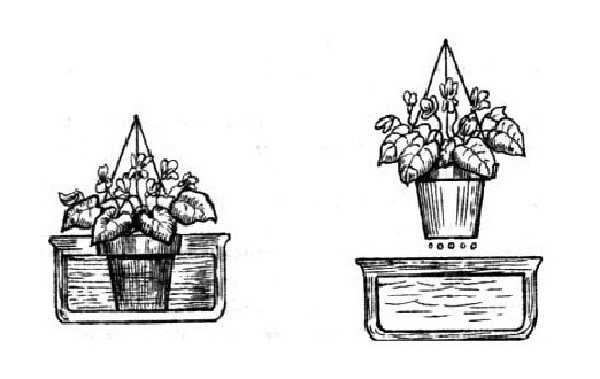

Immersing the plant pot in a container of water
Method number 2. Watering from above
Not a bad way of irrigation, the uniqueness of which lies in the fact that the water consumption is clearly visible in the process. In this case, the entire earthy coma is wetted. Among the minuses, it is worth noting the washing out of useful components from the upper part of the soil, which cannot be said about the first method.


Watering the cactus from above
To protect the plant stem from water ingress, you need to make a special device from a plastic bottle. It will play the role of a kind of sprinkler. To do this, you need to drill a small hole in the bottle cap and place two straws from the drink. A tube from an unnecessary dropper may come up. With the help of such a device, it is convenient to water a cactus or other indoor plants.
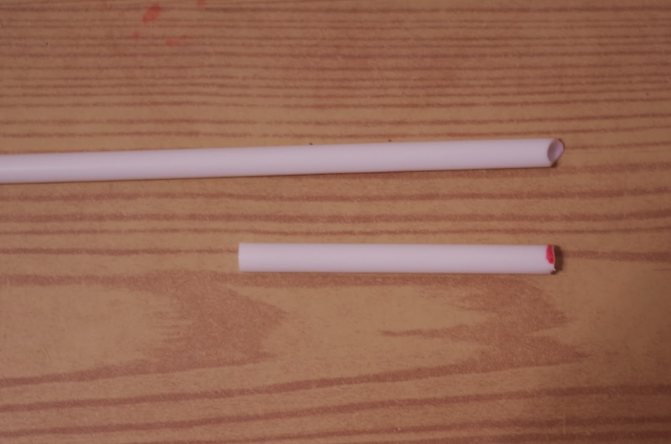

We prepare the tubes (here - different lengths)


We insert two tubes into the holes made and glue / seal them to the lid
Fast growth
For these purposes, the fertilizer "Bona Forte" is suitable, which contains potassium, nitrogen, phosphorus and 9 more microelements, including succinic acid. It is she who is a powerful stimulating component. The Dutch dressing "Pocon" has also proven itself well. for active growth and full development.
Nuances


Fertilizers should not be applied if there are health problems.- Do not increase the dosage to promote growth.
- Do not forget that the period of sleep for cacti is not only in winter, but also in hot summer. On such days, it does not even absorb water well. Therefore, feeding will be meaningless.
- When overfeeding, the plant loses its shape, peduncles weaken.
- Do not add sweet water, tea, broth and other mixtures that are not fertilizers into the pot.
Recommended watering time
It is advisable to water succulents in warm, sunny times. If you choose to water them in rainy and cold weather, they can be badly damaged. This is especially true for desert cacti, which rot when hypothermic. The optimal time for watering in Russia is morning. Evening watering is best ignored due to the frequent nighttime cold snaps that are typical for this climate. In the case of cacti, it will be better to skip a few waterings than to do it again. The death of the plant will become inevitable if it is watered at a low temperature (below +10 degrees). Don't forget this.
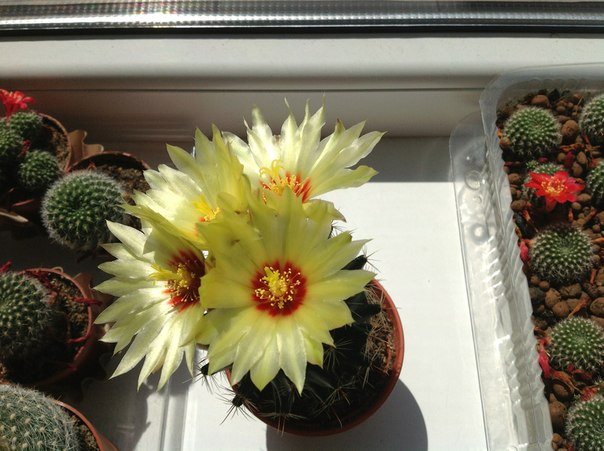

Time to water cacti - morning or evening
The importance of feeding
Competent and timely feeding is the key to the good health of the flower.... The use of fertilizers promotes the activation of growth, improves immunity, and increases the duration of flowering.
Each plant requires mineral fertilizers in different proportions throughout its life. Useful micro and macro elements are found in the substrate, and their consumption is directly related to the amount of precipitation.
With regard to cacti, opinions are divided on the use of minerals. There is a lot of controversy. Some experts believe that succulents do not need feeding. After all, the soil where they grow in nature is scarce, does not contain any organic matter. Indeed, if you overfeed the flower, the consequences will be extremely negative. Others argue that minerals are necessary, this has been proven by various experiments and observations. The main goal is not to overdo it, and to do everything right.
How often should you do this?
One of the most important factors in the development of cacti is the frequency of their watering. Most of the plants are native to African or South American lands, whose dry areas provide excellent conditions for the growth of cacti. These cultures have learned to retain a sufficient amount of moisture inside the "body", spending it gradually when necessary. This is due to habitats where it may not rain for several months. This feature of plants poses a threat to them with frequent and excessive watering, while rare watering will not be able to particularly harm them.


Cacti: complete monthly care calendar
There are also such types of cacti that do not tolerate prolonged droughts, therefore they are bred on their own more often than others. These are forest and tropical species. Therefore, it is necessary to take into account the individual characteristics of each plant separately.
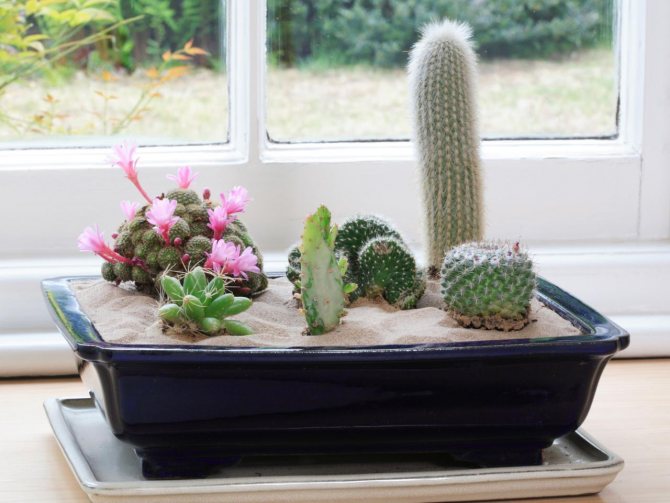

Cactus care rules
Do succulents have a cyclical development? It is worth noting that their growth rate decreases slightly in winter, as the plants conserve energy for further growth. The supply of energy is facilitated by the lack of sunlight, short daylight hours, which is required for the normal development of plants. This led to the need for special care for cacti in the winter.
Prices for cactus seeds
Cactus seeds
Caution, wintering!
For the winter, you need to put your pets where the temperature does not rise above +18 degrees. A cool place, such as a cold windowsill, will do. But at the same time, take care of protecting the plant from cold drafts. Growing a cactus at high temperatures will cause moisture to evaporate, causing it to gradually dry out. The combination of low light and coolness is ideal conditions for winter growth. If you have achieved these conditions, then the frequency of watering is no more than once a month, and in some cases even less often. With insufficient light and frequent watering, the plant may stop blooming, and its trunk may become deformed.
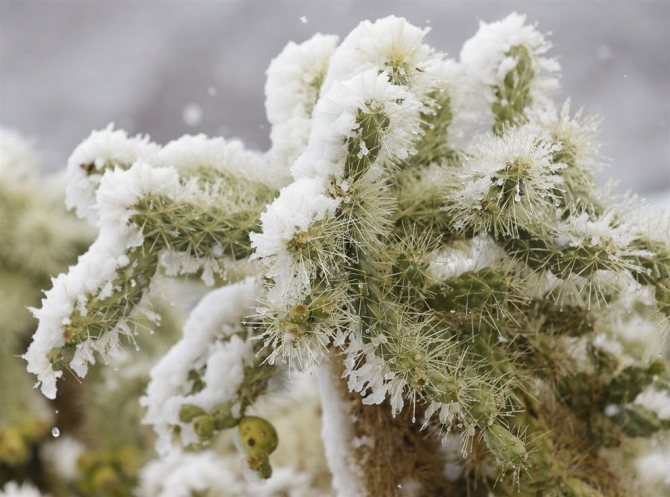

Wintering of cacti. How to water cacti in winter
Important! After wintering, the cactus may shrink slightly in size. This is a completely normal reaction caused by prolonged rest during cold weather.
With the onset of spring and an increase in the length of the day, plant growth is activated. Watering begins in the second half of April, when the warm weather managed to somehow stabilize. Adaptation to the coming season can be accomplished by gradually increasing irrigation. We are talking about two waterings per month - this will be enough.
Is it possible to water flowers with holy water
Usually people collect more holy water than they need, and by the end of the year, by the next Epiphany, they still have a decent supply. It is not recommended to pour out the consecrated water just like that, and the owners often wonder: is it possible to water the flowers with holy water?
Summer watering
With the onset of summer, external factors must be taken into account when watering. In sunny weather, for optimal plant growth, frequent watering is needed due to the strong evaporation of moisture, and in cloudy weather, water may not be required. This is due to the "dormant" state of the cactus. The recommended frequency of watering in the summer is 4-6 times a month. Insufficient moisture will cause the trunk to gradually dry out and wrinkle. The drainage located in the lower part of the vessel with the cactus can save the cactus from imminent death. Correctly selected soil will also cope with this.
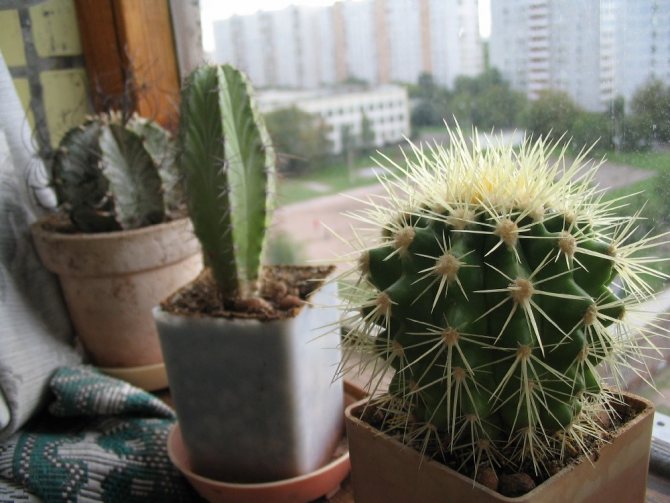

Cacti on the window
Soil can also affect the frequency of watering. For example, high-moor peat is part of the store substrate. It does not have a high moisture capacity, so it should not be used for most cacti, even the most unpretentious of them. It is advisable to mix this substrate with universal soil and sand - this will increase the moisture content and air permeability. For cacti, soil should be used that perfectly absorbs moisture.
Features of watering cacti
Frequent and abundant soil moisture is harmful to succulents: water displaces air and prevents the roots from breathing. Excess moisture, lack of oxygen in the ground provokes the appearance and reproduction of putrefactive infections. An exception to this rule is the Schlumberger cactus (zygocactus), which loves abundant watering and does not grow in a dark room. Keeping conditions, weather, variety, season, affect the amount of water needed by the plant. So, if a small pot is in a sunny room, then the soil dries quickly, and the flower needs abundant watering.
In the summer, the cactus actively grows and develops, so the soil must be watered every morning, and on sunny days it must also be sprayed. At the same time, it is important to direct the flow not to the plant itself, but on top of it. Exceptions are prickly pears and epiphytic cacti, the leaves of which can be washed under running water. In cloudy and rainy weather, the air is humidified, so it is better to refuse water procedures. On cold autumn days, the frequency of watering should be gradually reduced.
In winter, it is important to provide peace to the home flower: take care of sufficient lighting of the cactus, fresh air and minimal watering. It is better to place the pot in a cool place with an optimal temperature of 5–10 ° С.Watering cacti in winter should be minimized: moisten large varieties 1-2 times during these months, small ones once every 2 weeks.
- Cyclamen - home care, choice of soil and pot, rules for growing, reproduction and transplantation
- Echeveria: caring for a flower at home
- How to plant a mango and grow it from a stone at home - choosing a soil, watering and feeding
Watering instructions
Knowledge of the frequency of watering is not enough to grow cacti. You also need to know some of the features of this process.
Table. How to properly water a cactus.
| Steps, photo | Description of actions |
| Step 1 | You need only distilled or boiled water. It is strongly not recommended to use ordinary running water. |
| Step 2 | Avoid getting liquid on the surface of the cactus. You only need to water the soil around it. In this case, you should be careful, since water can adversely affect the state of the grown plant. |
| Step 3 | Distribute the liquid evenly over the area of the irrigated soil. |
| Step 4 | Get rid of water accumulated after watering. A large amount of moisture is unacceptable for this type of plant. |
| Step 5 | Spray daily. Do this in such a way that dew forms on the surface of the cactus. It is advisable to carry out this procedure in a warm room. |
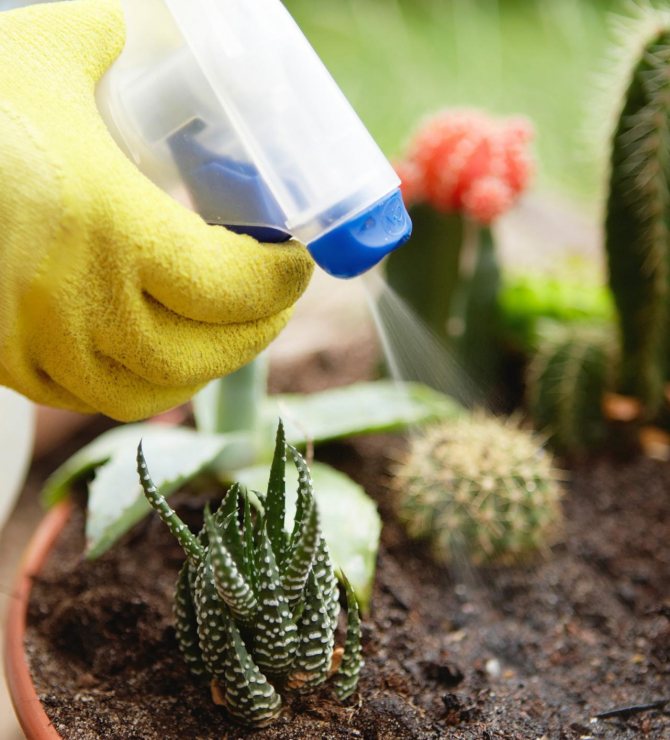

Spraying cacti with a spray bottle
Effective in-store fertilizers
Good quality fertilizers are recommended to be selected from specialized flower shops.
Suitable for cacti and succulents:
- Agricola. Dry dressing. Suitable for all types, dissolves well, has a balanced composition.
- Pocon. Suitable for everyone, promotes active growth and flowering.
- Flower heaven. Multi-complex universal fluid. Suitable for all plants, promotes growth, flowering and development.
- Master. A dry concentrate that provides the plant with all the essential nutrients.
- Bona Forte. Liquid fertilizer with a rich composition. Activates growth processes.
- Fusco. Complex liquid fertilizer, mineral composition. Introduced under the root system. Makes the decorative look more attractive, increases resistance to bad conditions.
- Etisso. Liquid complex top dressing. Suitable for all species, strengthens the immune system of plants, promotes growth and long-term flowering.
- Greenworld. Nutritious feeding of cacti for flowering and root system. Helps to strengthen the immune system.
Feeding cacti
The cactus is a kind of plant, so it needs special fertilizers. Their peculiarity lies in the content of a small amount of nitrogen. Excess nitrogen in fertilizer or soil can lead to the death of the plant (its stem gradually becomes watery and friable, rotting scars and wounds appear). Because of this, organic fertilizing is not used for cacti; they require calcium, potassium and phosphorus. These elements are found in special commercial fertilizers.
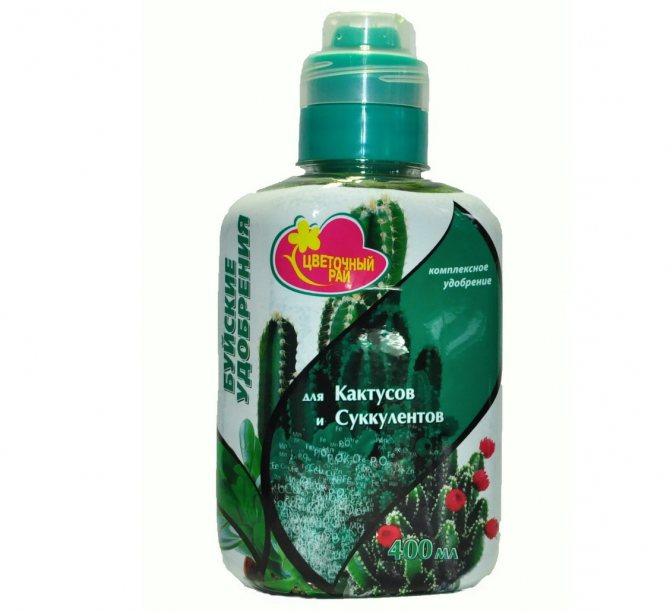

Liquid complex fertilizer for cacti and succulents
It is advisable to fertilize forest cacti no more than once a month, desert cacti - twice a month. You need to start feeding in 14 days from the moment of plant transplantation. It is advisable to do this from the end of March - the beginning of April.
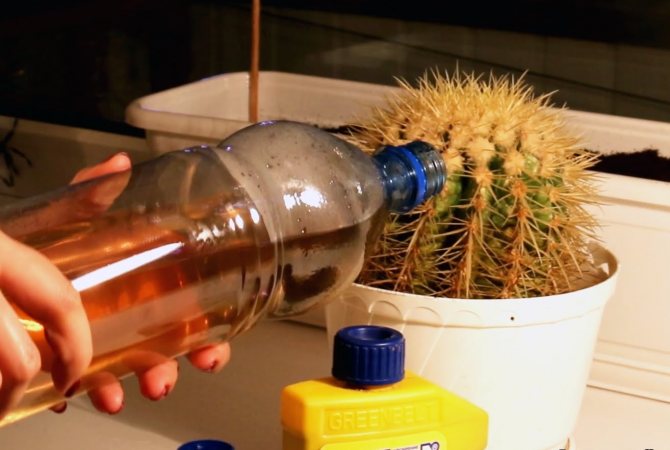

Feeding cacti
Flower Paradise Prices for Cacti and Succulent Plants
A flower paradise for cacti and succulents
Signs of a lack of nutrition
Your pets themselves will tell you when they lack nutrients.
It looks like this:
- The growth and development stopped - the lack of nitrogen in the soil.
- An active increase in "children" is a lack of zinc.
- Red spots, dying off of individual processes - a lack of sulfur.
- The color is faded, flowering does not occur - lack of magnesium.
- The root system does not develop, the plant lags behind in growth - lack of calcium.
- The color palette changes, lethargy - lack of fluoride.
- Kidney atrophy, loss of buds and flowers - iron deficiency.
At the first signs of deterioration in the appearance of plants, they take care of their correct and timely fertilization and feeding.
About air humidity
Succulents are very hardy plants, as they can perfectly tolerate hot and dry air. But at the same time, most of the cacti are refreshed with morning dew or evening fog. Spraying every day has a positive effect on growth. To do this, you need to use warm water, from 30 to 40 degrees. In sunny weather, spraying is carried out before sunlight hits the plant, and in autumn cold weather it is better not to spray at all. Of course, there is an exception among cacti, which can be given a generous shower to remove cobwebs and dust. These are Epiphyllum, Ripsalis and others. Excess moisture will not harm them in any way, but will only benefit.
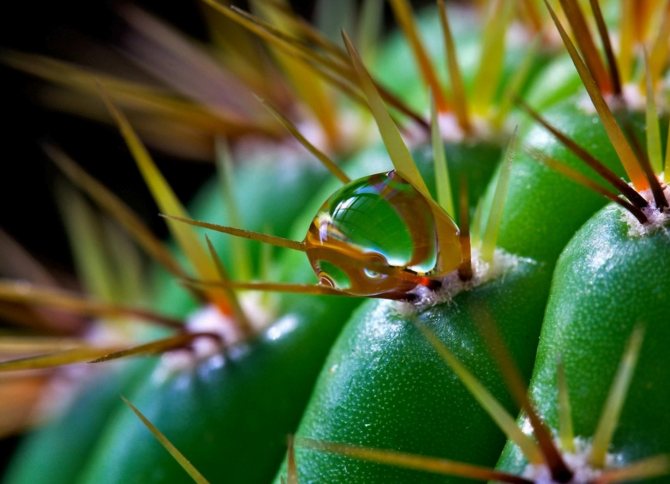

Spraying every day has a positive effect on the growth of cacti.
Do you need help in the development of a succulent?
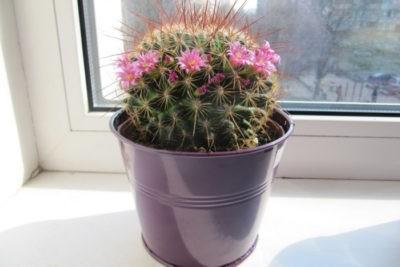

It is believed that cacti do not need to be fed at all. After all, they get enough nutrients from the soil. At the same time, it is imperative to do a transplant every 5 years and completely renew the soil. It's like that. And if the succulent does not have enough mineral fertilizers, it can be determined visually:
- stunting - lack of nitrogen;
- the appearance of red spots, the dying off of thorns - a lack of sulfur;
- the color changes - a sign of the absence of fluoride;
- the root system does not develop - lack of calcium;
- chlorosis, provoked by a lack of potassium;
- an active process of child formation - a lack of zinc.
There are quite a few problems when growing a cactus. But if you carefully consider all the recommendations of experienced gardeners and follow all the rules for caring for this unusual plant, then your green pet will decorate your home for a long time and may also delight you with its beautiful flowering. Let's find out how to choose the right pot, what is the best place to place the plant, and how and when to water and prune the cactus.
Thus, the owners themselves have the right to decide whether they need to feed their pets or whether they have enough nutrients in the ground. In any case, plants should be fertilized according to the rules, observing the timing and dosage.
If you find an error, please select a piece of text and press Ctrl + Enter.
Tips & Tricks
Most cactus species love cold wintering, but not every cactus grower is able to provide optimal conditions for this. In this case, the plants are forced to winter at an air temperature of + 17-25 degrees. Warm wintering should be accompanied by sparse watering so that the soil can dry out well.
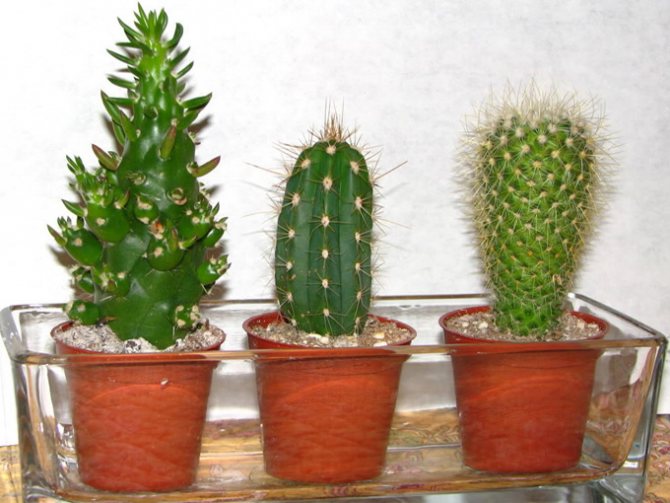

Almost all cacti love cold wintering.
When using hard water for irrigation, which contains a lot of lime, light brown formations appear on the bottom of the plant. This is a plaque that gradually turns into a crusty build-up. This often happens with those types of cacti that grow without thorns. Many inexperienced gardeners may mistake the appearance of growths for a disease, not suspecting that in fact these are ordinary salt deposits eating into the "body" of a cactus. To prevent such situations, you need to water the plants with filtered or boiled water.
Cactus care
The structure of decorative desert dwellers is distinguished by a thick stem, thorns instead of leaves, bright flowering and juicy fruits. However, in room conditions, cacti may not bloom for years due to non-observance of temperature and humidity. They also need fertilizer, as over time the plant draws nutrients from the soil.
Cacti love acidic soil; in alkaline soil, the root system begins to rot. The soil mixture can be composed of sand, humus and peat.Since the hermits do not have a developed root system, they must be kept in shallow flowerpots with a wide neck.
Despite the fact that cacti are home to the desert and rainforests, they do not like direct sunlight. Therefore, it is best to provide plants with diffused sunlight. Watering cacti depends on the season: in winter, the plant rests, so it does not need abundant moisture. In summer, cacti are watered as the soil dries.
Drafts are contraindicated for cacti.
Many people wonder why cacti do not bloom for years. Flowering depends on the correct air temperature. Peduncles are laid in winter, and at this time the temperature in the room should not exceed +15 degrees. If it is hot in the room in winter, you need to forget about flowering. Few people know about this secret, so they are content with non-flowering cacti.
Plant feeding is carried out throughout the spring-summer period and ends in September. Organic and specialized agrochemicals marked "for cacti" are chosen for fertilization. It is not recommended to feed the plants in winter, as they are dormant. In spring and summer, cacti are fertilized every two weeks.
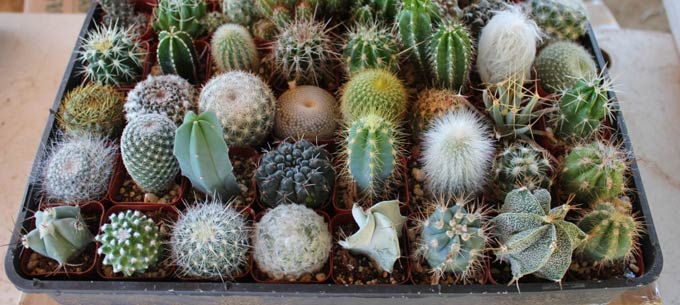

How to propagate and plant?
The easiest way to propagate is by cuttings. At a certain period, "babies" appear on the cactus, from which it is quite easy to grow a new plant. They must be carefully separated from the mother trunk using a sharp knife or other suitable object.
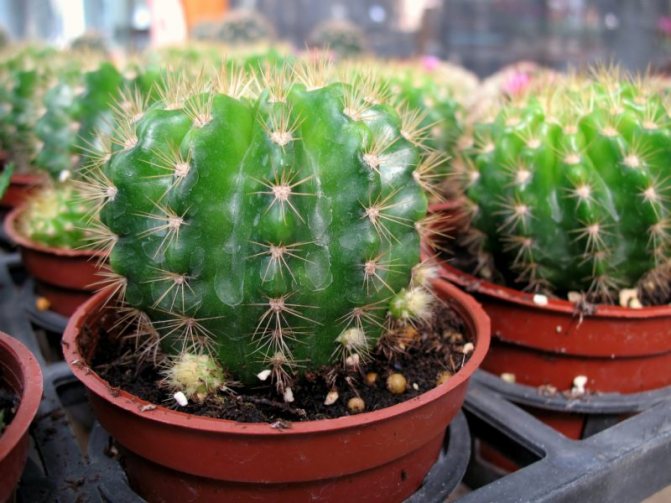

It is recommended to dry the cactus for several days to prevent root rot during rooting. Then you can plant the offshoot in a suitable soil. Caring for a small cactus during the rooting period is the daily moistening of the substrate surface with a little water.
Water needs
Unlike other indoor plants, succulents do not need to be watered too often, even if the earthy clod in which they grow is well dried. Drought-resistant plants tend to accumulate the resulting water in a specialized tissue - water-storing parenchyma, and in this state they can exist for a considerable amount of time.
Succulent plants, in the course of their evolution, acquired the skills of survival in their native arid climate, so in other latitudes they can live without water for several weeks, or even months.
The moisture reserve of succulents occurs in:
- thick stems (most cacti and milkweed);
- dense leaves (lithops, aloe).
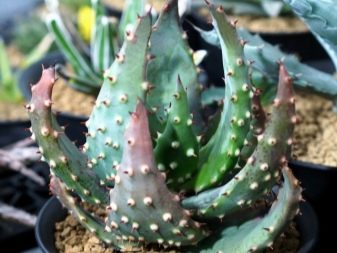

The reduction in the amount of evaporation of water occurs due to several points.
- Some species have a waxy film (cuticle).
- Leaves and stems are rounded.
- Endowed with a small number of respiratory pores (a large amount of moisture evaporates through them). They are closed during the day.
- During a long dry period, the aerial part of the body gradually dries up in many succulents, but the plant itself does not die. In certain specimens, this part dies off (completely or in places), but over time it will grow back if the plant is watered in time.
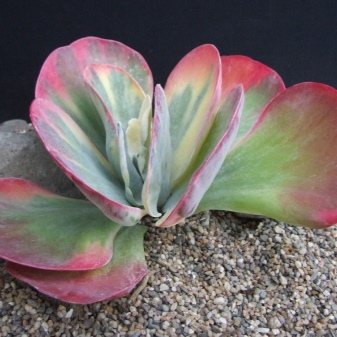

Taking home a succulent, you need to remember the main rule: it is better not to overflow this type of plant.
Before you start watering, you need to make sure that the succulent really needs water. It is worth touching the earthen lump, if it has dried out to the degree of a solid crust, the plant needs to be watered. The interval between watering succulents depends on their age and size. So, miniature and young specimens need to be watered more often, but in small portions, trying not to get on the aboveground part, unlike adult representatives.
Adult succulents are watered in large doses, especially in summer. Large plants are not afraid of water getting on the tissues of the leaves and trunk.
One condition remains unchanged during watering - the soil mixture must dry well before the next water procedure.
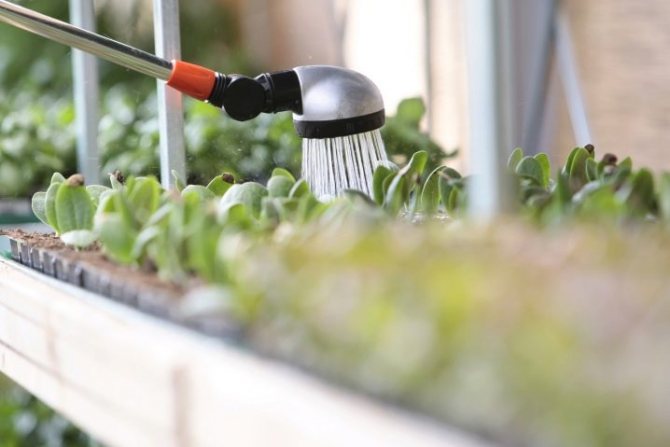

The importance of good nutrition
Like all biological organisms, cacti are composed of a variety of minerals. The lack of even one trace element immediately affects the appearance of the plant.
Nitrogen important for a successful set of green mass. However, different types of cacti require a certain percentage of nitrogenous substances in the fertilizer. If you go over the dosage, the shape of the cactus may not change for the better: the branches will begin to stretch, the trunk lengthens, etc. Sometimes the plants begin to become stained and hurt.
Phosphorus necessary for the successful development of peduncles, root system and testis. With a phosphorus deficiency, the cactus does not form children.
Potassium necessary for plant resistance to diseases, temperature instability and adverse conditions. However, an overabundance of a trace element leads to negative consequences: decay and disease. With a deficiency of potassium, yellowish spots appear on the green mass.
Note! Succulents (plants similar to cacti) are taken care of according to a similar scheme.
Calcium participates in the formation of thorns, buds and flowers. If the thorns crumble and become brittle, calcium should be added to the top dressing immediately.
The rest of the trace elements are introduced by spraying the plant, they help to improve the nutrition and appearance of cacti.
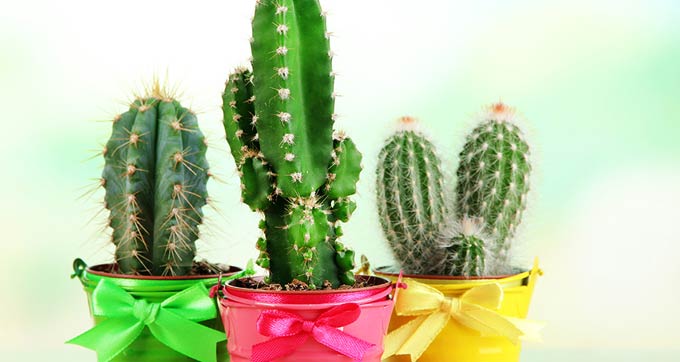

Lack of nutrition
Cacti need nitrogen, calcium, sulfur, fluorine, potassium, iron, magnesium, manganese, zinc and other trace elements.
- Lack of nitrogen and manganese is reflected in the cessation of development and growth of culture.
- Sulfur deficiency can be determined by the appearance of red spots and the death of the conductive bundles of the plant.
- Lack of fluoride prevents oxygen saturation, which is expressed in the stunted form of an ornamental culture.
- Calcium deficiency affects the underdevelopment of the root system.
- Potassium deficiency leads to chlorosis.
- Lack of magnesium discolors the tone of the flowers: they become faded.
- Iron deficiency leads to the death of the buds: they dry out and fall off.
- Lack of other trace elements (molybdenum, copper or boron) leads to a halt in plant development.
Do I need to feed cacti?
You may ask: do you need to feed cacti? More recently, cactus lovers believed that fertilizers and mineral baits are completely contraindicated for cacti. Today we can talk about the desirability and even the need for nutritious feeding, but not forgetting that different cacti need a different composition of the fertilizer mixture: some need higher concentrations of nutrients, others weaker. And most importantly, you need to have a good idea of why you are fertilizing a particular cactus and what you want to achieve, what results - a healthy plant / long-flowering plant, etc.
Helpful hints
Cactus plants are strikingly different from more familiar indoor flowers, and in order to properly water a cactus, you should know how to do it so as not to be mistaken:
- Many cacti like to be outdoors in warm weather. They should be provided with a rain canopy.
- Moisture must be introduced into the soil, avoiding its contact with the aerial parts of the succulent.
- Waterlogging of the soil is most dangerous at low air temperatures, as well as with a lack of natural light; in such conditions, flowers often attack various rot.
- Water that accumulates in the sump after watering or later needs to be removed.
- For cacti, the bottom irrigation method is also suitable - "through the pan", but in this case it is difficult to determine the amount of introduced moisture.
- In summer, it is better to water succulents in the evening hours, at low air temperatures - in the morning.
- If the weather is cloudy, rainy, then it is advisable not to moisturize the cactus bud.
- After transplanting, the plant is placed for several days away from direct sunlight and is not watered; it is advisable not to disturb it during adaptation.
- Fertilize cactus plants during active growth using liquid mineral fertilizing. They are introduced into the soil after watering or together with it, so that the fertilizer does not burn the aboveground and underground parts of the flower.
Flowering cacti during the budding period require a delicate attitude. If at this time you turn the pot with the plant, rearrange or pour the soil, then the pet will get rid of the buds or they will turn into processes. When the flowers bloom, it is important to provide it with the necessary moisture, but without fanaticism.
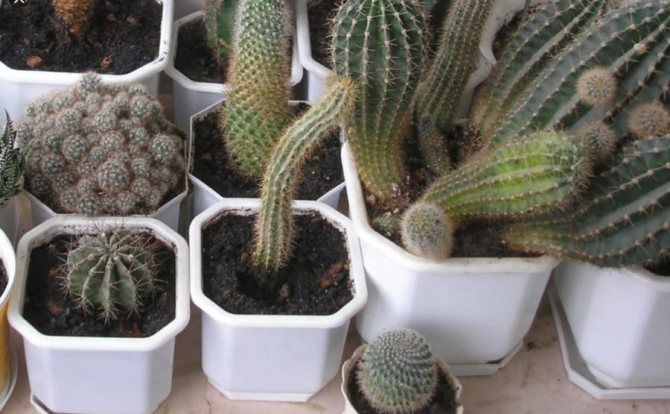

Fertilization rules
During bad weather, metabolic processes slow down in cacti, so they poorly absorb nutrients. Top dressing is carried out when the weather is fine and clear.
- Before applying a working solution of fertilizers, it is necessary to moisten the earthen lump well with settled water so that the concentrate does not burn the root system.
- You should only dilute top dressing with well-settled water at room temperature.
- If the cactus is affected by fungi or other diseases, feeding is not carried out until it is completely healed.
- It is impossible to exceed the dosage of fertilizers indicated in the instructions, as this can provoke a disease of the plant.
- In the middle of summer, ornamental culture is not fed.
- Spraying of plants is carried out after sunset or at dawn, so that sunburns do not appear.
- When root feeding, you need to make sure that the liquid does not get on the plant itself.
Try to adhere to the basic rule: do not fertilize cacti in hot, cold or cloudy weather. At this time, the movement of plant juices is suspended, so nutrients are not absorbed properly. Also, you can not make top dressing if the plant is in a draft.
After transplanting into a new flowerpot, feeding is not given for about a month, since the nutrients in the soil are quite enough for development. It is also not recommended to add additional food immediately after the culture has taken root or after purchase from a flower shop. The cactus needs to adapt to new conditions.
Tips for florists
- To avoid stagnation of moisture in the container, drainage must be used. and do not forget about the drain holes at the bottom.
- When watering, do not allow water to enter the plant, otherwise it will look untidy, and corking may appear at the bottom of the stem.
- Cacti can grow for a long time without water, its excess will lead to decay.
- The frequency of watering and its volume depends on the ambient temperature and humidity: the lower the degree, the less water is required for the plant.
Fertilizers for succulents
There is an opinion that succulents do not need feeding, the main thing is to create favorable conditions for growth and development. However, it is not. Plants need high-quality soil containing humus, and regular application of mineral fertilizers.
Attention! Top dressing for succulents is only suitable for root, they do not tolerate spraying.
Fertilizers are applied with the onset of the growth period (in March), intensified during flowering, reduced by autumn and completely stopped in winter.
Phosphorus, potassium, calcium and nitrogen are especially important for succulents. However, you should not overdo it with the last element in order to exclude rotting of the root system.
Potassium
This mineral is essential for normal plant nutrition. In addition, potassium regulates their development, contributes to the coarsening of the integument - so they better tolerate temperature fluctuations.
Potassium provokes the process of bud formation, regulates the duration of flowering.
An excess of potassium is also harmful - succulents stop growing, the root system suffers greatly.
Phosphorus
This mineral is responsible for the growth and normal development of rhizomes.In addition, phosphorus stimulates the laying of buds, affects the nature of flowering. If there is little of it in the soil, succulents will not bloom at all - moreover, they will stop growing and developing.
Complex mineral fertilizers for succulents should contain more phosphorus than nitrogen and potassium.
Calcium
It serves as the main building material for bristles, hairs, spines. If there is very little calcium in the soil, this is a sure sign of acidification. Liming will help with any available means.
Read also Potato gratin classic recipe in the oven
Plants react to a lack of calcium with fragility, fragility, and a poorly developed root system.
Nitrogen
Without it, normal development and growth of succulents is impossible. However, these plants do not grow so rapidly, and therefore the need for nitrogen is not as great as it might seem.
An excess of this mineral in the soil provokes rapid growth, stretching. The stems become very watery, friable. Many underdeveloped processes are formed. The peel on the trunk often bursts, because it simply does not have time to grow.
Note. Excess nitrogen provokes the ugly development of succulents, their rapid death.
Organic
Feeding cacti with ordinary organic matter (manure, bird droppings) usually disfigures the plants: succulents become too fatty, fleshy, the skin cannot withstand the load - it bursts. There is no question of any flowering.
For these plants, only liquid organic fertilizers are suitable, which can be purchased at specialized stores. For example: "Fertimix" or "Stimovit". In the right dosage, they are absolutely safe - they act gently and for a long time on evergreens. In addition, such organic matter promotes budding, protects them from diseases, stimulates growth, and strengthens the immune system.
Liquid organic matter is used from May to the end of September, the frequency is 1 time in 14 days.
Fertilizer recommendations
Note. If the root system is damaged by rot, it is pointless to apply fertilizers - the plant will not be able to assimilate them.
- The dormant period for succulents, cacti, not only in winter, but also in hot summer. During these periods, they even consume poorly water. Therefore, there is absolutely no need to talk about the absorption of nutrients from dressings.
- Illiterate fertilization - too frequent or with a gross violation of dosages - provokes disastrous consequences. There is a sharp increase in pests, rot appears in the soil, the immunity of domestic plants is weakened, which invariably leads to their death.
- If the soil has become too acidic, lime is needed. But excessive deoxidation will not benefit the succulents - they like slightly acidified soil. It is then that they can well assimilate nutrients from dressings.
- Cacti do not like sweet water, tea solution.
- Do not exceed the dosage of fertilization just to stimulate growth.
- Overfeeding causes one harm to plants: they lose their regular shape, weaken, do not throw out flower stalks.
Watering frequency at home
How much you need to water cacti at home depends on many factors:
- Plant type. Desert succulents do not experience a shortage of water even in the hottest weather. In summer, water is required on average once every 7 to 10 days, in winter they do not need it at all. But tropical succulents in the summer are watered quite often, as the soil dries up. In winter, less often, no more than a couple of times a month.
- The location of the plant pot. You will have to water more often if the window faces a hot sunny side (south, southeast or southwest).When the window is oriented to the north, north-west or east - less often.
- The material from which the bowl is made. A succulent plant living in a ceramic container will require more frequent watering than one that grows in a plastic container.
- Flower age. Young, fast-growing plants need more water, while adults need less watering.
- The period of activity. Resting cacti are also carefully watered. They are offered water very rarely, or they are not pampered with water procedures at all.
- Soil condition. Special purchased soil often consists only of high moor peat, which has a very low moisture capacity: water does not penetrate into the soil, lingering on the surface. For looseness, river sand should be added to such a substrate, which increases permeability.
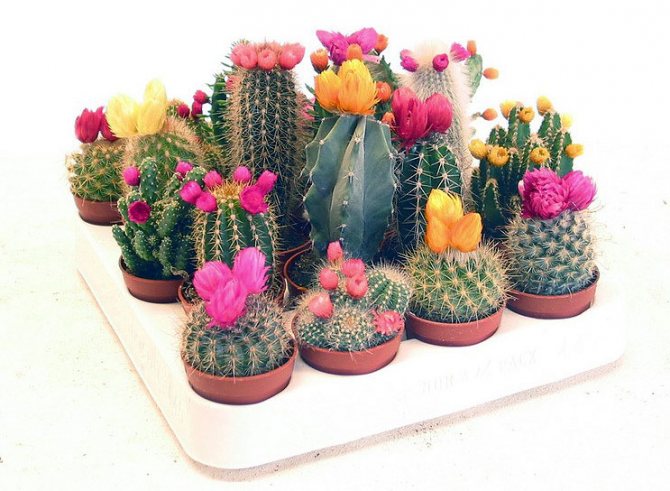

Home fertilizers
For the full development, growth and abundant flowering, succulents and cacti can be fertilized with folk dressing from waste material.
For example, eggshells. It contains a lot of calcium, which not only contributes to the proper development of plants, but also fights against excessive acidification of the soil. The shells are often added along with compound fertilizers, which increase the acidity of the soil. For balance. The shells are washed well, dried, crushed, then brought into the ground.
Note. Egg skins decompose for a long time, and therefore the application dosage should be observed so as not to strongly alkalize the earth.
This fertilizer will most of all appeal to adult cacti. As well as infusion on the shell: a handful of raw materials are poured with 3000 ml of hot water, left for 5 days. Then the solution can be periodically applied to water the plants.
Another good fertilizer for cacti is ash. This natural mineral substance enriches the soil with potassium, phosphorus, promotes flowering, the formation of a powerful trunk, and the correct development of the root system.
Top dressing is prepared as follows: ash is diluted in water (1: 3), infused for 3 days, used for root dressing every 14 days.
How to feed succulents correctly
Before fertilizing cacti, you need to familiarize yourself with the needs of these desert plants and learn how to do it so that feeding is "for the good":
- concentrated fertilizers should be diluted in filtered or settled water;
- when damaged by pests and any disease, indoor flowers are not fertilized, this also applies to succulents;
- it is necessary to correctly dose the preparations, otherwise root rot may occur, pests can infect the soil, the shape of the flower changes and it does not bloom for a long time;
- spraying the plant with nutrient mixtures is desirable during cloudy weather, this will eliminate the likelihood of sunburn;
- there are situations when it is not worth fertilizing vegetation - immediately after transplanting or acquiring a flower, as well as in the first couple of weeks after rooting;
- before applying fertilizing for plants, growers with experience are advised to moisten the soil with water;
- succulents do not fertilize if they stand in the scorching sun, in the cold or in a draft;
- the nutrient mixture intended for application "under the root" should not fall on the aerial parts of the plant, as it can burn its skin;
- the event will be effective if the "pet" grows in acidified soil, since with an increased amount of carbonate compounds in the soil or watering with water of increased hardness, it will grow poorly;
The plant, although it does not say what it lacks or what it receives in excess, but it is able to signal a violation in nutrition. If it has stopped growing, then, most likely, we are talking about a lack of nitrogen. With a deficiency of iron or magnesium, succulents lose their color brightness. This sign is also observed if a flower from a shady place is sharply exposed to intense sunlight.A solution of potassium phosphate is required if the buds, unopened inflorescences fall off the succulent, and the flowering process itself is scarce.
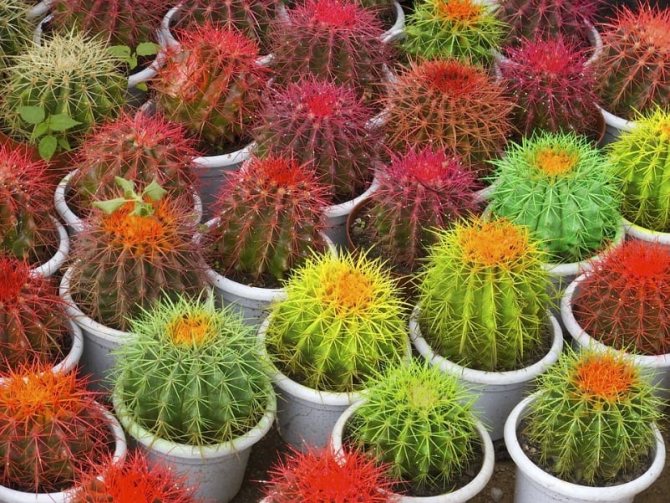

Top dressing from improvised means
This set of elements is traditional for all indoor plants.
Complexes of improvised means consist of: sugar, bones from fish, potato peelings, water after soaking meat, castor oil, milk.
Available ready-made fertilizers include Pokon, GrowUp and other balanced complexes.
Watch the cactus, he himself will "tell" about his problems, if you are attentive to him. With good care, one day it will give you a magnificent surprise, a delicate and quivering desert flower.
Timing and frequency of feeding
Diluted fertilizers are usually applied every 14 days from March to September. As soon as the plant leaves during the dormant period (October-March), feeding is stopped.
Fertilizers should not be applied during periods of bad weather. At this time, the metabolism of plants slows down, they are inhibited in growth, and consume little nutrients.
After transplanting into a new pot, the cactus does not need feeding for at least 21 days.
Important! It is forbidden to fertilize unhealthy plants. Otherwise, you can only harm them.
Top dressing is applied strictly after abundant watering in order to avoid burns of the rhizomes.
Along with the end of the growing season, you can gradually reduce the amount of dressings.
Watering requirements
To determine which watering conditions are best for succulents, it is necessary to look at their natural habitat. Nature itself invented for them the most suitable climate, humidity regime. In desert regions, temperature drops are noted. Of course, in the conditions of Russia it is difficult to ensure such an effect. But you can do everything you can to get closer to those.
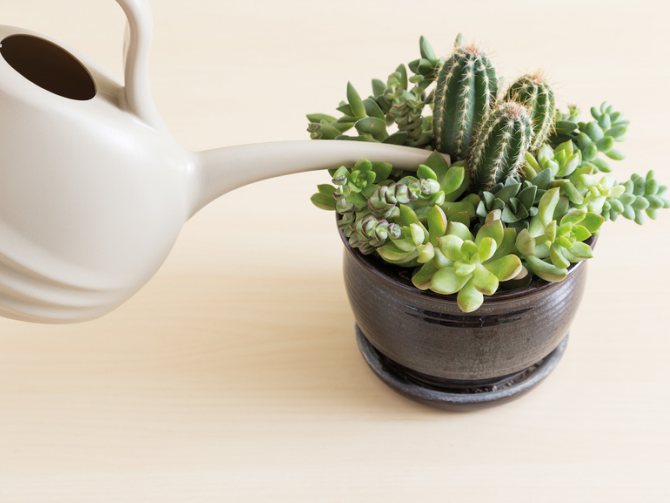

It is not hard to determine how often to water your succulents. It is necessary for this to touch the surface layer of the soil and determine if it is wet... If it is dry or even crusty, you can water it again. But if wet soil is hidden under such a crust, then watering will lead to the fact that the roots will begin to rot.
Succulents are able to exist for a long time without watering. It is enough to do this once every three days, or even better once a week. What the grower thinks is stress, the succulent tolerates perfectly. You should not, worrying about your favorite flower, water it too much.
In this case, it will only be possible to achieve the opposite effect, when the representative of the cactus begins to rot.
Growing from seeds
The depth of the container for planting plants should be at least 3 cm. Simple garden soil, mixed in equal amounts with coarse sand, is suitable as a soil for succulents. You can add a little charcoal to this mixture, which has absorbing properties. It absorbs all excess moisture, which protects the root system from decay.
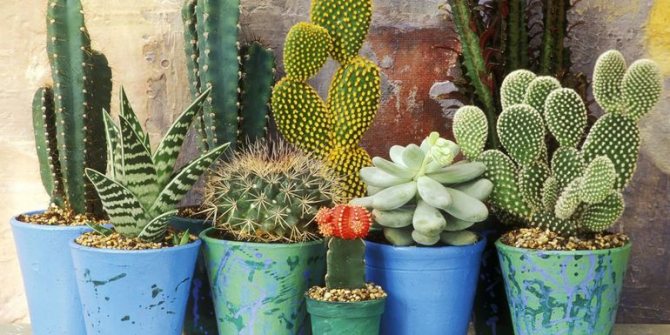

Aloe and a number of other plants can be sown on regular perlite without mixing anything else into it. The seeds do not even have to be sprinkled with soil. It is enough to put them on the surface of the substrate. At the same time, it is better to close the container itself with a piece of glass or film.
The optimal temperature range for growing crops is within + 20-25°. Do not overdry the substrate. Seedlings respond favorably to frequent watering. They also like good lighting. If you are going to plant a plant in winter or autumn, you need to provide it with increased daylight hours, using lamps for artificial lighting.
The first shoots can be seen after a few weeks. Individual plants germinate in a month. As soon as the plant grows to 1 cm, it must be transferred to a separate container.
Water temperature
The cactus will feel comfortable when the water temperature is right. For watering, it should be 5-7 C higher than the room temperature.
Other experts are of the opinion that the best option for watering is a liquid with a temperature of 30-40 C at any temperature in the room.
For spraying, you should take hot water. It cools down quickly during irrigation. Cacti love this kind of hydration. It is advisable to choose a fine sprayer.
To water the plants with melt or rain water, it is advisable to pre-warm it in the sun.
Optimal plant conditions
Cacti in the house require no less attention than any other plant. First of all, for them you need to choose a suitable place that will meet all the requirements put forward by the plant.
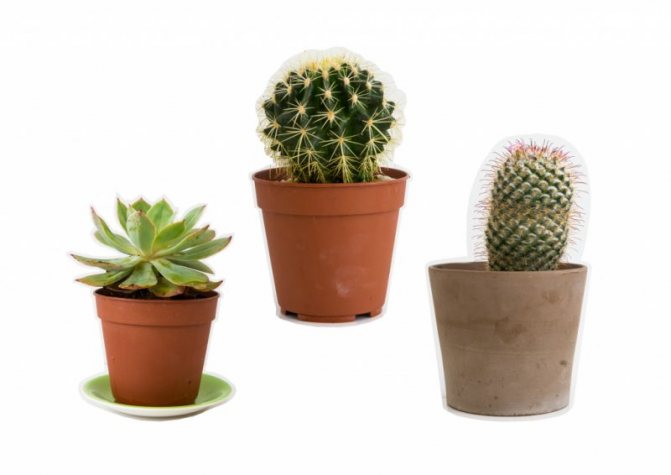

- It is recommended to approach the purchase of a succulent pot with special care. Its volume should not exceed the diameter of the root system by more than 1 cm. Those cacti that have an elongated rhizome need elongated dishes. If the roots of the plant do not go deep, it is better to choose a flat pot.
- The cactus should be placed on the windowsill from the southwest side - there should be a lot of sunlight. Some species can tolerate shade, but most plants die from this.
- Also, a succulent needs a lot of fresh air for full growth. It will need to be moisturized during the hot season.
- The room temperature is suitable for cacti, but in winter they need to be kept cool.
Cactus care
Cacti are evergreen plants of the cactus family. They are characterized by a thick stem with spines and hairs instead of leaves, single flowers, juicy but not edible fruits. For cacti, proper care is very important, with an abundance of light, moisture, with an optimal temperature, as well as timely fertilization.
After purchase, the plant is transplanted. If rot, damage is found on its root system, they are immediately removed. For full growth, future flowering, wide, shallow pots are suitable. The soil should be nutritious, with a slight acidity (optimal pH = 4 - 6). A mixture of humus, sand and peat is fine. It is not worth alkalizing the soil too much - cacti will grow poorly and constantly hurt.
Lighting is required for cacti diffused, and therefore they should not be placed in direct sunlight. Watering is needed regularly in summer and rarely in winter when the plant is dormant. Cacti love fresh air, but do not tolerate drafts. They feel great at a temperature of + 17 ... + 25 °, but during the period of winter rest it is reduced to + 9 ... + 15 °. Cool wintering is needed for cacti to lay future flower stalks. If they grow at the same temperature all year round, then you can forget about flowering.
Top dressing of cacti is carried out from the beginning of spring to the end of September. For this, complex mineral compositions, liquid purchased organic matter or special products marked "for cacti" are used. During the period of growth and development, fertilizer is applied twice a month, during the rest period, feeding is stopped.
Note. Before fertilizing, the plants are shed well, and babies and asymmetrical shoots are also removed.
Some subtleties of watering succulents
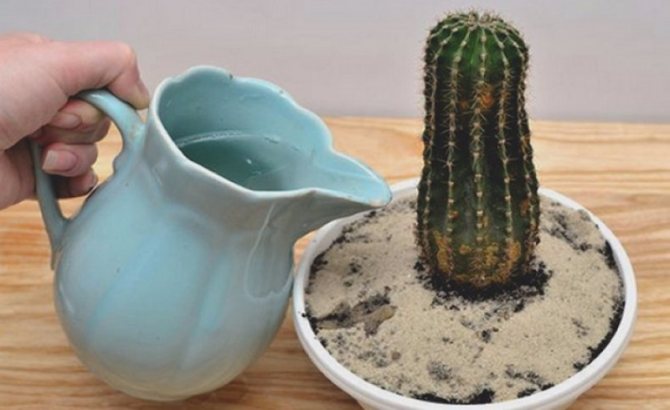

Still, the main criterion for the irrigation regime is the species belonging of the culture. Some succulents need more moisture and need to be watered more frequently, such as Echeveria. Compact stone rose bushes will be properly watered often, but in small portions. But species with a well-developed stem can be watered less often, but more abundantly. Water will be absorbed into the soil, but a developed root system will be able to take moisture from the bottom of the pot for some time.
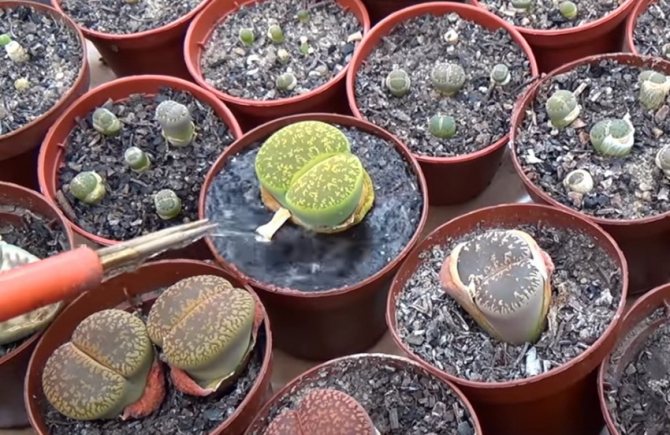

The most unpretentious crumbs in relation to watering are lithops. These living pebbles can calmly wait for the owner even for a month.
It is also worth considering the material of the container in which the flowers grow. In clay pots, moisture lasts longer. In plastic flowerpots, the soil dries out faster.

